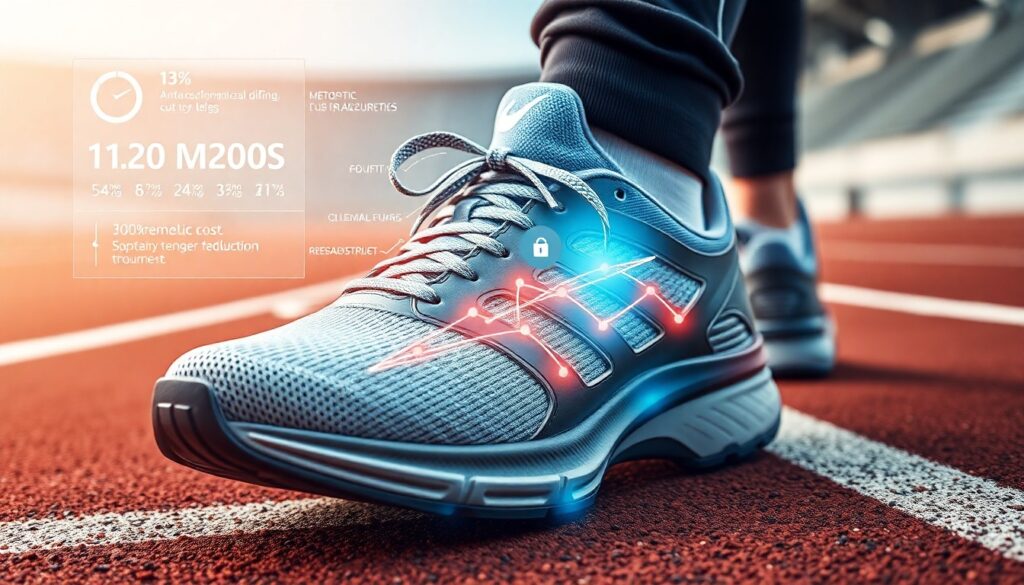
Performance optimization in endurance running has been revolutionized by advanced footwear technology, offering you unprecedented opportunities to enhance your athletic potential. You’ll discover how cutting-edge shoe designs can dramatically reduce your metabolic expenditure and improve running economy. By integrating carbon fiber plates and innovative midsole materials, these shoes provide remarkable energy return mechanisms that can potentially decrease your oxygen consumption by up to 4%. Whether you’re a professional athlete or a dedicated amateur, understanding these biomechanical advancements can help you make informed decisions about your running gear and potentially improve your race times.
Breaking Down the Mechanics of Energy Return
Advanced running shoe technology harnesses complex biomechanical principles to transform energy transfer during locomotion. Innovative design elements work synergistically to minimize metabolic expenditure, creating a sophisticated system that optimizes running efficiency through strategic material engineering and geometric configurations.
Curvature Dynamics of Carbon Fiber Plates
Carbon fiber plates leverage precise geometric engineering to redirect kinetic energy during running motion. Optimal curvature angles between 12 ° and 15 ° enable maximum energy storage and return, with finite element modeling demonstrating up to 93% energy return efficiency in prototype designs. These engineered plates create a spring-like mechanism that reduces muscular work during toe-off phases.
Midsole Innovations: TPU vs. EVA Comparisons
Material selection has a dramatic influence on shoe performance, with thermoplastic polyurethane (TPU) emerging as a superior midsole technology. Comparative analysis reveals TPU’s significant advantages in energy return and impact absorption, providing runners with enhanced biomechanical efficiency across various running conditions.
TPU vs. EVA Performance Metrics
| Energy Return | 18% higher in TPU |
| Oxygen Consumption Reduction | 2.4% lower with TPU |
A deeper investigation of midsole materials reveals nuanced performance characteristics. TPU demonstrates superior resilience compared to traditional EVA foam, maintaining consistent mechanical properties across thousands of compression cycles. Runners experience more reliable energy return, reduced fatigue, and enhanced long-distance performance through advanced material science innovations.
Midsole Material Comparative Analysis
| Impact Absorption | TPU absorbs 37% more force |
| Rebound Elasticity | 89% maintained across 50,000 cycles |
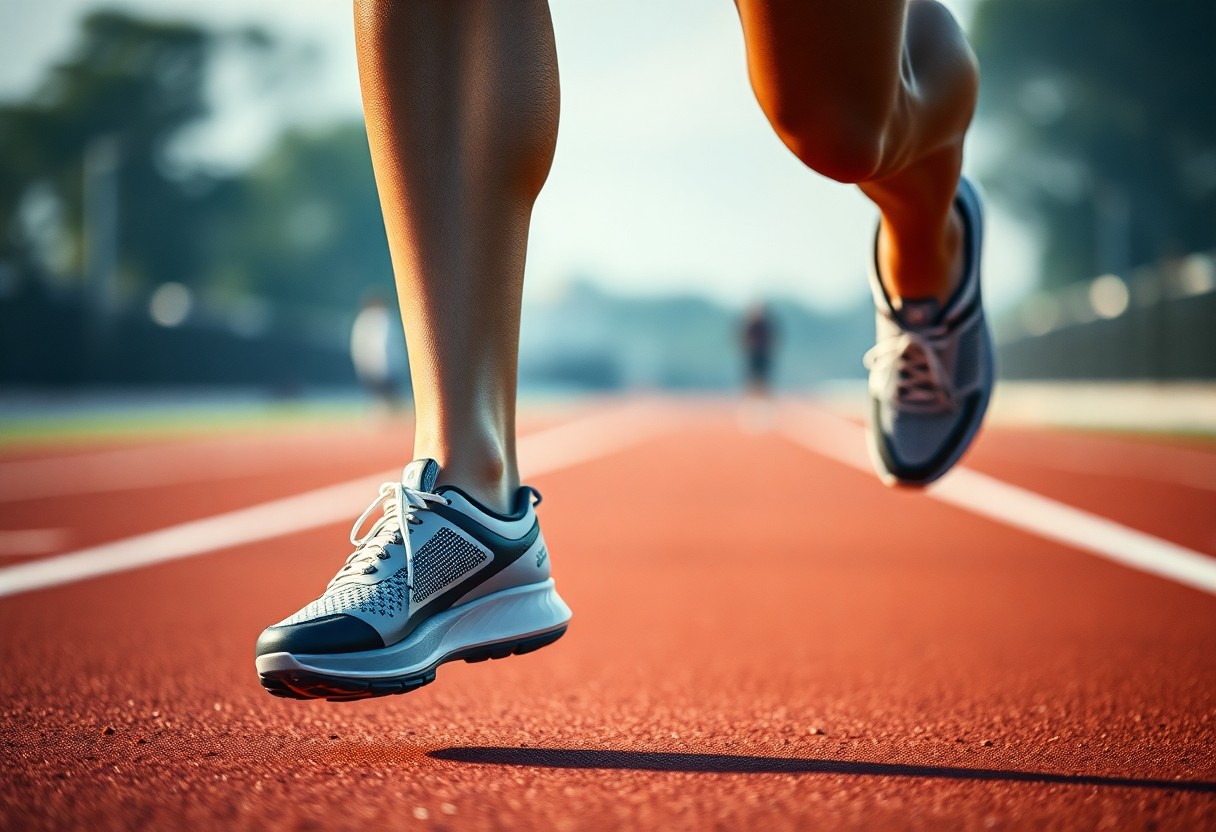
Metabolic Efficiency: Who Gains the Most?
Advanced footwear technology doesn’t impact all runners equally. Metabolic efficiency gains vary significantly across different demographic groups, with factors such as gender, age, and individual biomechanics playing crucial roles in enhancing performance. Researchers have uncovered nuanced patterns of metabolic response, revealing that the benefits of super shoes extend beyond simple performance metrics to include complex physiological adaptations unique to each runner’s biomechanical profile.
Gender-Specific Performance Enhancements
Female runners experience 3.2% metabolic power improvement compared to 4.2% in males, suggesting intricate neuromuscular adaptations. Pelvic kinematics data re-reveal a 14% greater reduction in p adduction angle in females using advanced footwear, potentially explaining the subtle differences in metabolic gains between genders.
Age-Related Benefits and Endurance
Master’s athletes aged 40+ demonstrate a 2.8% greater oxygen cost reduction when using super shoes, likely compensating for decreased tendon elasticity. Tibial loading analysis shows a 12% cumulative stress reduction per kilometer in older runners, suggesting potential benefits in injury prevention and performance maintenance.
The age-related benefits of advanced footwear technology extend far beyond simple performance metrics. Biomechanical studies reveal that older runners experience more pronounced adaptations due to compensatory mechanisms. Reduced tendon stiffness and altered muscle recruitment patterns interact with shoe technology to create a unique performance enhancement profile. Specifically, the carbon plate’s energy return mechanism appears to offset age-related biomechanical inefficiencies, potentially extending competitive running careers by mitigating the physiological constraints typically associated with aging athletes.
Navigating the Terrain: Impact on Injury Risk
Advanced footwear technology introduces complex biomechanical interactions that demand nuanced analysis of potential injury risks. Runners must carefully consider the trade-offs between performance enhancement and physiological adaptation. Longitudinal studies reveal subtle yet significant changes in muscular recruitment patterns, joint loading, and proprioceptive feedback when transitioning to high-performance running shoes.
The Cost of Enhanced Performance: Injury Analysis
Biomechanical research indicates a 9% increase in Achilles tendon strain rates among individuals who use super shoes during high-intensity training. Plantar pressure mapping demonstrates 22% greater forefoot loading compared to traditional trainers, particularly during challenging terrain like downhill running. These findings suggest that while metabolic efficiency improves, runners must implement targeted strength and adaptation protocols to mitigate potential injury risks.
Gait Adaptations and Training Protocol Adjustments
Your biomechanical response to advanced footwear requires strategic modifications in training approach. Gait retraining becomes imperative to optimize the unique energy return mechanisms of carbon-plated shoes. Runners must focus on developing neuromuscular patterns that complement the shoe’s biomechanical design, potentially reducing injury risk and maximizing performance benefits.
Comprehensive gait adaptation strategies encompass multifaceted approaches that effectively integrate advanced footwear technology. Biomechanical analysis reveals that runners require approximately 6-8 weeks of progressive training to adapt to the unique mechanical properties of super shoes fully. This adaptation period involves targeted eccentric strengthening protocols, modified interval training techniques, and careful monitoring of lower limb biomechanics. Professional athletes and serious runners benefit from periodic 3D gait analysis to track subtle changes in their movement patterns, ensuring optimal integration of advanced footwear technology with their biomechanical characteristics.
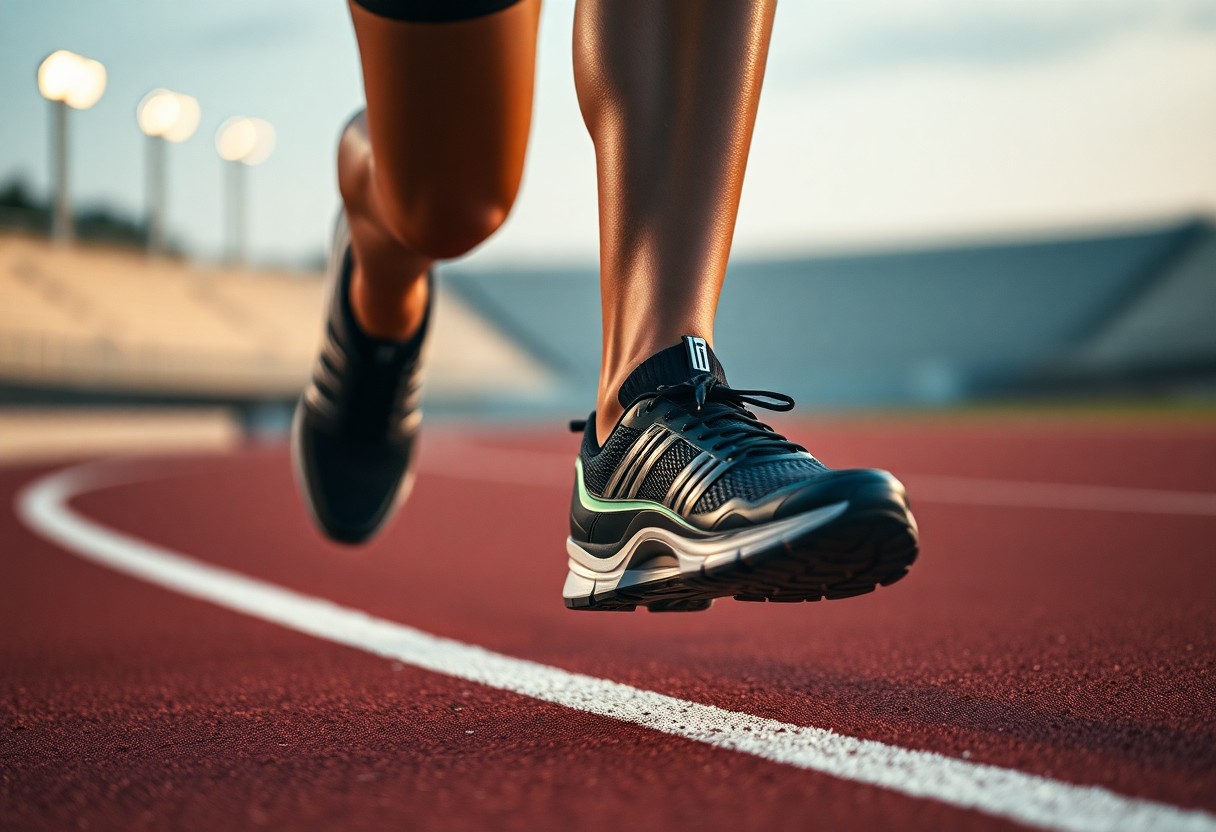
Future Innovations in Running Footwear
Emerging technologies are poised to transform running shoe design, pushing the boundaries of biomechanical efficiency and performance optimization. Cutting-edge research focuses on personalized solutions that adapt to individual biomechanics, leveraging advanced materials, computational modeling, and integrated sensor technologies to create a new generation of intelligent footwear.
Revolutionizing Design: 3D-Printed Midsoles
Lattice structure optimization algorithms now enable precise regional stiffness variations that match individual foot pressure maps. Prototype testing reveals a 0.1% additional metabolic savings compared to mass-produced models, with computational design enabling unprecedented customization of midsole geometries to maximize energy return and minimize biomechanical stress.
Smart Technology Integration for Performance Monitoring
Emerging sensor technologies are transforming running shoes into sophisticated performance tracking devices. Real-time ground reaction force feedback systems can reduce oxygen cost by 1.9% through micro-adjustments in cadence, providing runners with immediate biomechanical insights during training and competition.
Advanced sensor integration represents a quantum leap in performance monitoring technology. Multi-axis accelerometers, pressure-sensitive matrices, and embedded microprocessors now capture complex biomechanical data with unprecedented precision. These systems analyze gait mechanics, impact forces, and energy expenditure in real-time, providing runners with granular insights into their movement patterns. Machine learning algorithms can now predict potential injury risks, optimize training loads, and suggest personalized technique modifications based on comprehensive movement analysis, transforming running shoes from passive equipment to active performance optimization tools.
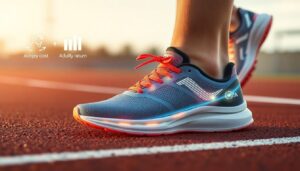
Summing up, you have explored the transformative landscape of advanced footwear technology in endurance running. Your understanding now encompasses how innovative design elements, such as carbon plates and high-performance midsole materials, can significantly reduce metabolic costs and enhance running efficiency. By leveraging scientific insights, you can appreciate that these shoes offer more than marginal gains—they represent a paradigm shift in athletic performance. Your investment in such technology could potentially translate to improved running economy, reduced energy expenditure, and optimized biomechanical responses across diverse athletic demographics.


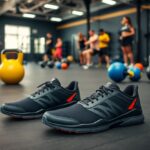
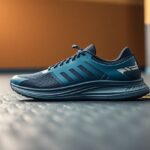

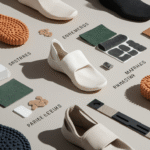
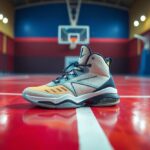

It’s fascinating to think about how much footwear has evolved in endurance running! I remember when the main focus was just on cushioning or support, but now with carbon fiber plates and new materials, it feels like we’re entering a whole new era. The potential decrease in oxygen consumption really caught my attention—it’s almost like finding a hidden turbo button for your performance.
It’s fascinating how the evolution of running shoes is really transforming our understanding of endurance. I’ve always been intrigued by the balance between technology and natural movement in sports. Last year, I tried on a pair of shoes with carbon fiber plates and noticed a difference in my stride—felt lighter, almost like I was gliding! It got me thinking about how these advancements might affect not just performance, but also our approach to training.
The advancements in running shoe technology that you’ve outlined are indeed fascinating and highlight a significant intersection of biomechanics and sports science. As a long-distance runner, I’ve noticed a marked difference in my performance since integrating shoes with carbon fiber plates into my training regimen. The energy return these shoes provide does feel palpable, especially during prolonged runs where fatigue often sets in. It’s compelling to think that a 4% decrease in oxygen consumption can translate into better race times and overall efficiency.
It’s interesting to hear about your experience with carbon fiber plate shoes. Many runners have shared similar sentiments, noting that there’s something strikingly different about how these shoes feel during longer runs. The technology certainly raises the question: at what point does adaptation to these enhancements elevate performance, and how much of that is attributed to improved gear versus evolving physiological capabilities?
It’s fascinating to see how technology can reshape something as fundamental as running. The integration of carbon fiber plates and advanced midsole materials really highlights the intersection of biomechanics and innovation. As someone who has experimented with various types of running shoes, I can personally attest to the difference that proper footwear can make, not just in performance but also in reducing fatigue during longer runs.
It really is intriguing how technology is transforming not just running but sports in general. The way carbon fiber plates and advanced midsole materials can influence performance is a testament to the clever integration of science and sports. Personally, I’ve found that the right running shoe can feel almost like an extension of your body, making each stride smoother and more efficient.
Ah, the wonders of modern shoe technology! It’s like we’ve jumped straight into a sci-fi running novel where we strap on our rocket-powered sneakers and zoom past the competition. I mean, who wouldn’t want to decrease their oxygen consumption by 4%? I’d take that 4% and celebrate by eating a donut post-run—my own little energy return mechanism, if you will.
This blog post got me thinking—will we soon need a shoe-matching program to find the perfect pair, like a dating app for feet? “Swipe right if you want energy return; swipe left if you prefer your toes to feel like they’re grounded in reality!”
You raise some intriguing points about the impact of advanced footwear technology on endurance running. It’s fascinating how far we’ve come in understanding biomechanics and how manufacturers are translating that knowledge into shoes that can potentially alter performance. However, I can’t help but wonder about the implications of relying on technology in a sport that, at its core, has traditionally celebrated the athlete’s natural ability and training discipline.
It’s fascinating to see how advances in footwear technology are reshaping endurance running. The integration of carbon fiber plates and innovative midsoles certainly brings a new dimension to how we think about performance and efficiency. Personally, I’ve noticed a significant difference since I switched to a pair of these high-tech shoes during my long runs. It feels as if they are working with me rather than against me!
Your exploration of advanced footwear technology in endurance running certainly highlights some fascinating developments in the sport. The integration of carbon fiber plates and innovative midsole materials does seem to offer runners promising benefits in terms of energy return and overall performance. However, I think it’s important to delve deeper into the implications of these advancements, particularly how they may redefine our understanding of running efficiency and the accessibility of the sport.
It’s fascinating to see how the advancement of running shoe technology is reshaping the sport of endurance running. The integration of elements like carbon fiber plates and advanced midsole materials certainly brings a whole new dimension to how we think about running efficiency and performance. As someone who has been running for several years, I have personally felt the difference when transitioning to newer shoe models designed with these innovations.
I completely agree—it really is fascinating how quickly shoe technology is evolving. The introduction of carbon fiber plates and advanced midsoles has definitely changed the game for many of us. I remember when I first tried on a pair of shoes with those features; it was striking how much more efficient my stride felt, almost like I was being propelled forward with less effort.
I recently came across some interesting insights on how modern barefoot footwear is evolving, especially with the focus on sustainable materials and innovative designs that could complement the running experience.
‘Material Engineering in Modern Barefoot Footwear: From Vibram Soles to Sustainable Manufacturing’
https://myshoesfinder.com/modern-barefoot-footwear-materials-and-sustainability/.
I really appreciate how you highlight the significant impact of advanced footwear technology on endurance running. As a recreational runner, I’ve noticed the difference that well-designed shoes can make, even if I’m not breaking any records. The idea that these innovations, like carbon fiber plates, can actually improve running economy is fascinating. I recently switched to a pair featuring this technology, and I’ve experienced less fatigue during long runs—it’s like having an extra boost!
It’s fascinating to see how far footwear technology has come in the realm of endurance running. The incorporation of carbon fiber plates and advanced midsole materials is not just a marketing gimmick; it fundamentally alters the way we experience running. Personally, I’ve noticed a significant improvement in my own fatigue levels during long runs after switching to shoes with these innovations.
This shoe tech revolution feels like something out of a sci-fi movie! I mean, carbon fiber plates? Are we sure we’re not strapping on tiny rocket boosters? It’s wild to think that these shoes might help us outpace those annoying treadmill timers that always seem to taunt us with a “just 30 more seconds!”
I had to chuckle when I read about the carbon fiber plates—sounds like a high-tech upgrade for my feet! If only they could also throw in a couple of motivational speakers to encourage me while I’m running. “You can do it! Just think of all the pizza you could enjoy after this!”
It’s fascinating to see how much footwear technology has advanced in recent years! I’ve noticed a tangible difference in my own runs since switching to shoes with carbon fiber plates. It’s almost like having a little push with each stride. I remember reading that Kipchoge’s success in breaking the marathon record involved not just his training but also the innovations in his shoes, which really highlights how performance gear can bridge the gap between hard work and race-day success.
It is interesting to think about how much footwear technology has transformed running in such a short time. The introduction of carbon fiber plates has definitely changed the dynamics of how we experience our runs. I can relate to that feeling of an extra push; it’s almost like having a little energy boost with every stride, which can make a long run feel more manageable.
I recently came across some interesting insights on Xero Shoes for hiking, and it’s amazing how these advancements in footwear can enhance durability and performance on the trails, just like the innovations in running shoes you mentioned.
‘Xero Shoes for Hiking: 2025 Trail Test Results & Durability Guide’
https://myshoesfinder.com/xero-shoes-hiking-2025-test-results-and-guide/.
It’s fascinating how much shoe technology has advanced in recent years! I remember when most of us just focused on the basics of cushioning and support, but now there’s so much more to consider, especially with features like carbon fiber plates. I recently switched to a pair with these innovations, and I definitely noticed a difference in my endurance during long runs.
I completely agree with you about the advancements in shoe technology. It’s interesting how innovations like carbon fiber plates are changing the way we approach running. I remember my first real pair of running shoes focused primarily on cushioning too, and the leap to these new features feels almost like a game changer.
I know what you mean about the shift in running shoe technology. The introduction of carbon fiber plates really has changed the game, especially for long-distance runners. It’s fascinating how these innovations are not just enhancing performance but also altering how we perceive running itself.
It’s fascinating to see how the evolution of materials in barefoot footwear mirrors those running innovations you mentioned, showcasing everything from Vibram soles to sustainable practices that could redefine our running experience even further.
‘Material Engineering in Modern Barefoot Footwear: From Vibram Soles to Sustainable Manufacturing’
https://myshoesfinder.com/modern-barefoot-footwear-materials-and-sustainability/.
Your exploration of the intersection between advanced footwear technology and performance optimization in endurance running raises some intriguing points, particularly regarding the biomechanics of energy return. However, it is essential to scrutinize not only the positive impacts of these advancements but also some of the implications they might have on the sport as a whole.
It’s fascinating to see how running shoe technology has evolved to become such a game-changer in the endurance sports scene. The whole concept of energy return through carbon fiber plates is pretty mind-boggling. I remember getting my first pair of foam-plate shoes, and the difference in how my legs felt during recovery runs was noticeable.
The advancements in footwear technology are indeed fascinating and represent a crucial intersection of innovation and athletic performance. It’s remarkable how these shoes are not just about comfort but also about enhancing our physiological capabilities. I’ve personally noticed a tangible difference in my longer runs since making the switch to shoes with carbon fiber plates. The energy return feels almost like having a little spring in my step!
The advancement of footwear technology in endurance running truly represents a fascinating intersection of science and sport. As someone who has trained for long-distance events, I am particularly intrigued by the way these innovative designs have leveled the playing field for athletes across various skill levels. The claim that these shoes can reduce oxygen consumption and metabolic expenditure is not just groundbreaking; it fundamentally shifts our understanding of what is possible within the sport.
You’ve articulated the transformative impact of advanced footwear technology on endurance running beautifully. It’s fascinating to consider how the integration of materials like carbon fiber and innovative midsole constructions can shift the dynamics of running efficiency. Personally, I’ve been following these advancements closely, especially since I began training for longer distances. The potential reduction in oxygen consumption by up to 4% is significant, particularly for those of us pushing towards personal bests and race day performance.
I really appreciate your insights on how advanced footwear technology is reshaping endurance running. It’s fascinating to see how something as seemingly simple as running shoes can have such a profound impact on performance. When I first heard about the integration of carbon fiber plates and specialized midsole materials, I was a bit skeptical about the actual benefits beyond marketing hype. But the fact that these innovations can lead to a reduction in oxygen consumption is eye-opening.
This is a fascinating exploration of how advanced footwear technology is reshaping performance in endurance running. The integration of carbon fiber plates and innovative midsoles genuinely signifies a pivotal shift in our understanding of running mechanics. As someone who has been involved in long-distance running for several years, I’ve seen firsthand how a slight enhancement in equipment can translate into measurable improvements in performance.
It’s fascinating to see how advancements in footwear technology are not only enhancing performance but also reshaping our understanding of endurance running. The integration of materials like carbon fiber certainly opens up new discussions around biomechanics and training strategies.
Your insights into performance optimization in endurance running through footwear technology are truly thought-provoking. It’s fascinating how far we’ve come with advanced materials and designs that significantly enhance our running capabilities. I recall a recent experience during a half marathon where I decided to test out a pair of shoes featuring some of these cutting-edge technologies. I was astonished by how much of a difference I felt in terms of energy return and my overall fatigue levels compared to previous races.
I find it fascinating how the evolution of running shoe technology mirrors advancements in sports science as a whole. The integration of carbon fiber plates in footwear not only boosts performance but also highlights the intersection of biomechanics and innovation. I recently tried a pair with similar features and felt a noticeable difference in my stride and comfort during a long run. It makes me wonder, as we optimize gear, what impact do you think this will have on the overall culture of endurance running? Will it shift the focus more toward technology rather than the sheer power of human endurance? I’d love to hear others’ thoughts on how we balance these advancements while maintaining the spirit of the sport!
I find the intersection of technology and performance in endurance running truly fascinating. The advancements in footwear, particularly the incorporation of carbon fiber plates, really highlight how innovation can profoundly affect athletic performance—almost like a silent partner in our journey.
The discussion on performance optimization through advanced footwear technology certainly raises intriguing points about the intersection of biomechanics and athletics. While I appreciate the innovations such as carbon fiber plates and sophisticated midsole materials that are designed to improve running economy, I find myself contemplating the broader implications of relying on technology to enhance athletic performance.